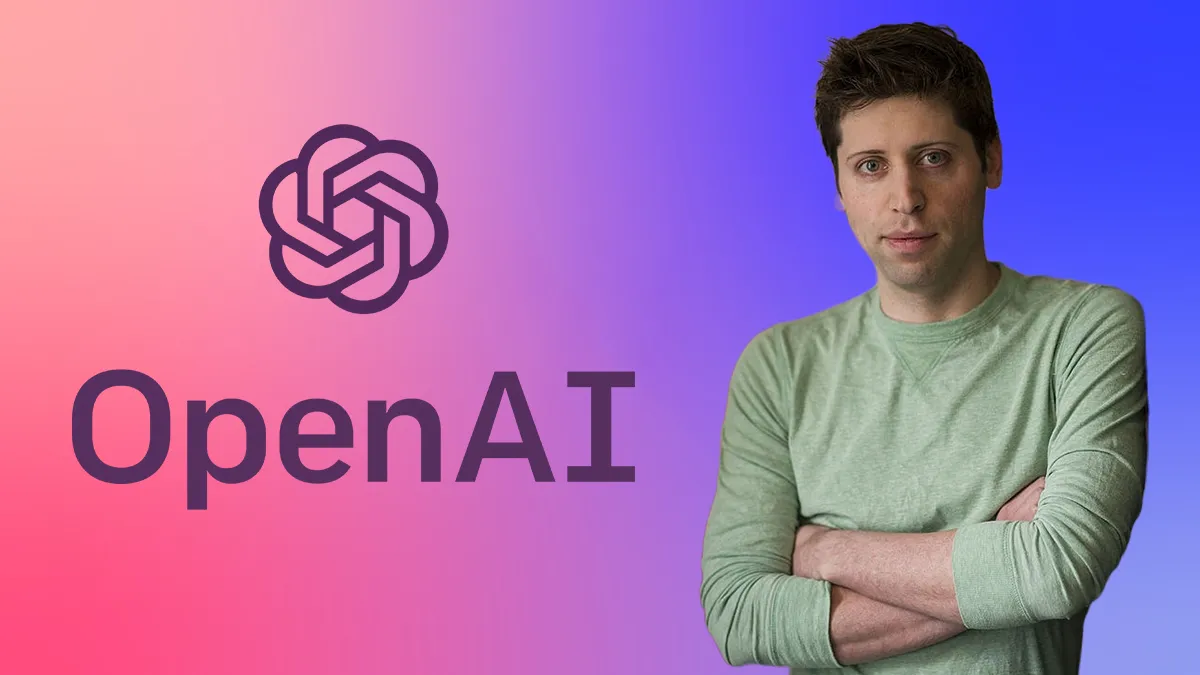The Diverging Paths Of Altman And Nadella: The Future Of AI At Stake

Table of Contents
Altman's Vision: Open-Source and the Democratization of AI
Altman, the CEO of OpenAI, champions a philosophy centered on open-source development and the democratization of AI. This vision seeks to make the benefits of AI accessible to a wider range of developers and researchers, fostering innovation and collaboration on a global scale.
OpenAI's Philosophy: Sharing Knowledge, Fostering Innovation
OpenAI's mission statement emphasizes the responsible development and deployment of AI for the benefit of all humanity. While not entirely open-source in all its endeavors, OpenAI has released several significant models and tools under permissive licenses, encouraging community contributions and advancements.
- Examples of OpenAI's open initiatives: The release of GPT-3's API, allowing developers access to its powerful language model. The development of various open-source tools and datasets for AI research. Participation in collaborative AI safety research initiatives.
- Challenges faced: Balancing the benefits of open-source with the risks of misuse, managing the immense computational resources required, and addressing ethical concerns related to bias and misinformation.
Potential Risks and Benefits of Open-Source AI
Altman's open approach presents a double-edged sword. While it fosters innovation and widespread adoption, it also introduces potential risks.
- Benefits: Increased innovation due to collaborative development, faster advancements in AI capabilities, wider accessibility for researchers and smaller companies, and potentially more diverse applications.
- Risks: Increased potential for misuse of AI technologies (e.g., deepfakes, malicious code generation), difficulty in controlling the development and deployment of AI, and challenges in ensuring responsible AI practices across a decentralized ecosystem. Ethical considerations, such as bias amplification and the spread of misinformation, also require careful monitoring and mitigation.
Nadella's Strategy: Integration and Corporate AI Powerhouse
In contrast to Altman's open approach, Satya Nadella, CEO of Microsoft, has pursued a strategy of aggressive integration of AI technologies into Microsoft's existing ecosystem. This creates a powerful corporate AI powerhouse, focused on commercialization and market dominance.
Microsoft's AI Ecosystem: Seamless Integration and Market Penetration
Microsoft has strategically integrated AI across its product lines, leveraging Azure AI, GitHub Copilot, and other tools to enhance productivity and expand its market reach.
- Examples of Microsoft's AI integrations: The integration of AI-powered features into Microsoft 365, the use of AI for enhanced cloud services on Azure, and the deployment of AI-driven tools for software development on GitHub. These integrations have significantly impacted market share and user experience.
- Market Impact: Microsoft's integrated approach has solidified its position as a leading player in the AI market, attracting developers and businesses seeking comprehensive AI solutions.
Controlled Innovation and Commercialization: A Profit-Driven Approach
Microsoft's strategy centers on controlled AI development and commercialization, prioritizing profitability and market leadership. This involves strategic investments in research, acquisitions of promising AI startups, and the development of proprietary AI technologies.
- Examples: Microsoft's significant investment in OpenAI, its acquisitions of AI-focused companies, and the ongoing development of its own proprietary AI models for various applications.
- Focus on Profitability: This model prioritizes revenue generation through the sale of AI-powered products and services, establishing a strong competitive advantage.
The Clash of Philosophies: Open vs. Closed Models
The contrasting approaches of Altman and Nadella represent a fundamental clash between open-source and closed-source philosophies in AI development.
Ethical Considerations: Navigating the Complexities of AI Development
The ethical implications of both approaches are significant.
- Open-Source: While fostering innovation, open-source models require robust governance to mitigate risks like bias amplification, malicious use, and the spread of misinformation. Promoting responsible AI development within this decentralized landscape is a major challenge.
- Closed-Source: Controlled environments can help manage safety and ethical concerns, but they also raise issues of transparency and accountability, potentially limiting innovation and accessibility.
Long-Term Impact on the AI Industry: Shaping the Future
The diverging paths of Altman and Nadella will have profound long-term consequences for the AI industry.
- Market Share: The success of each approach will significantly influence market share and dominance within the AI sector.
- Innovation: Open-source models could accelerate innovation, while closed-source models could lead to more targeted and potentially more profitable applications.
- Accessibility: The degree of accessibility of AI technology will depend largely on the balance between open and closed approaches.
Conclusion: Choosing the Path Forward in AI
The diverging paths of Altman and Nadella represent a fundamental philosophical divide in the future of AI. Altman's vision of open-source democratization prioritizes widespread access and rapid innovation, while Nadella's strategy emphasizes controlled integration and commercial success. Both approaches present unique advantages and challenges regarding ethical considerations, innovation, and accessibility. The long-term implications of these diverging paths will profoundly shape the future of artificial intelligence. Continue exploring the "diverging paths of Altman and Nadella" and join the ongoing conversation about the responsible and equitable development of AI. Engage in discussions, research the latest advancements, and help shape a future where AI benefits all of humanity.

Featured Posts
-
 Noa Argamani Former Hamas Hostage Named To Times 100 Most Influential
Apr 30, 2025
Noa Argamani Former Hamas Hostage Named To Times 100 Most Influential
Apr 30, 2025 -
 Canada Election Looms Trump Weighs In On Us Canada Dependency
Apr 30, 2025
Canada Election Looms Trump Weighs In On Us Canada Dependency
Apr 30, 2025 -
 Cleveland Cavaliers Clinch 10th Consecutive Win Hunter Leads With 32 Points
Apr 30, 2025
Cleveland Cavaliers Clinch 10th Consecutive Win Hunter Leads With 32 Points
Apr 30, 2025 -
 Amanda Owens Tearful Goodbye To Our Yorkshire Farm
Apr 30, 2025
Amanda Owens Tearful Goodbye To Our Yorkshire Farm
Apr 30, 2025 -
 Panoramas Chris Kaba Episode Independent Office For Police Conduct Complaint To Ofcom
Apr 30, 2025
Panoramas Chris Kaba Episode Independent Office For Police Conduct Complaint To Ofcom
Apr 30, 2025
